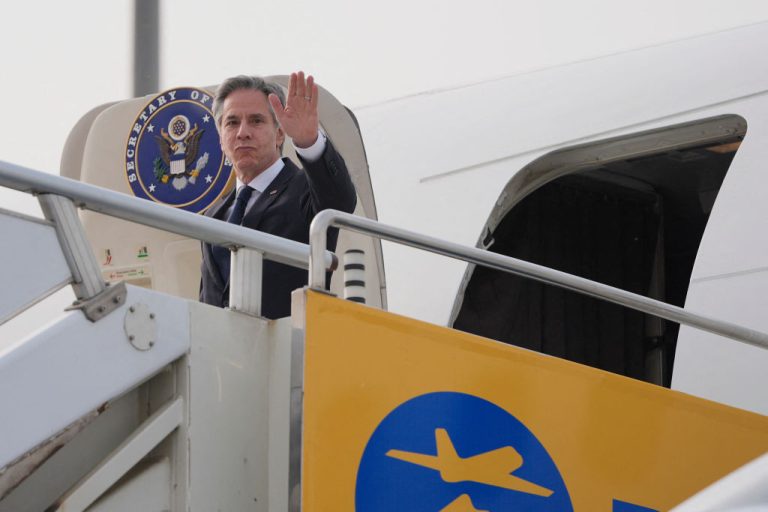Multiple researchers at Wuhan’s high-security biolab, the Wuhan Institute of Virology (WIV), developed symptoms indicative of COVID-19 months before Chinese authorities announced the outbreak at the end of 2019, according to a fact sheet released by the U.S. Department of State on the evening of Friday, Jan. 15.
The announcement adds weight to a common but difficult-to-verify theory that the novel coronavirus outbreak began when the pathogen escaped the confines of the high-security bioresearch facility, rather than jumping naturally from animals to humans.
“Any responsible country would have invited world health investigators to Wuhan within days of an outbreak,” the State Department said. “China instead refused offers of help — including from the United States — and punished brave Chinese doctors, scientists, and journalists who tried to alert the world to the dangers of the virus.”
It also comes as the World Health Organization begins its long-delayed onsite investigation of the SARS-CoV-2 virus and its origins in China. U.S. Secretary of State Mike Pompeo said his department was making available the “new information concerning the activities inside China’s government laboratories in 2019” so as to assist the WHO efforts.
According to the top diplomat, Washington “has reason to believe that several researchers inside the WIV became sick in autumn 2019, before the first identified case of the outbreak,” Pompeo’s statement reads.
Success
You are now signed up for our newsletter
Success
Check your email to complete sign up
That the employees suffered symptoms consistent with COVID-19 “raises questions about the credibility of WIV senior researcher Shi Zhengli,” who claimed a “zero infection” rate among the lab’s staff and students.
Neither transparent nor consistent
According to Chinese official accounts, the first known cases of the COVID-19 appeared in December 2019. However, the Communist Party authorities muzzled early reports about the virus, claiming for weeks that there was no evidence that it could transmit among humans. Chinese leader Xi Jinping and other officials only admitted human-to-human contagion on Jan. 20, 2020, after the Chinese New Year migration was in full swing and multiple cases had been confirmed abroad.

“Any responsible country would have invited world health investigators to Wuhan within days of an outbreak,” the State Department said. “China instead refused offers of help — including from the United States — and punished brave Chinese doctors, scientists, and journalists who tried to alert the world to the dangers of the virus.”
The Chinese authorities initially claimed that the coronavirus jumped naturally from animals to humans, possibly in unsanitary conditions at a wet market in Wuhan, which is located in the central province of Hubei.
The State Department says that WIV had been researching coronaviruses similar to SARS-CoV-2 since at least 2016. Pompeo said the Institute, which is the only P4-security level bio-research facility in China, was not forthcoming about its study of the pathogens, and that WIV’s links to the Chinese military made it particularly suspect.
“Since the outbreak, the WIV has not been transparent nor consistent about its work with RaTG13 or other similar [corona]viruses, including possible ‘gain of function’ experiments to enhance transmissibility or lethality.”
“Despite the WIV presenting itself as a civilian institution, the WIV has collaborated on publications and secret projects with China’s military. The WIV has engaged in classified research, including laboratory animal experiments, on behalf of the Chinese military since at least 2017,” the State Department said.
According to the fact sheet, the Chinese Communist Party (CCP) continues to “withhold vital information that scientists need to protect the world from this deadly virus, and the next one.”
As of Jan. 16, the pandemic has sickened nearly 100 million people worldwide. More than 2 million are dead.
Coronavirus politics and the Wuhan P4 lab
The WIV’s presence in the same city where SARS-CoV-2 infections were first registered has fueled widespread speculation since the beginning of the pandemic.
Last May, Pompeo said U.S. intelligence agencies had “enormous evidence” to suggest a lab origin for the virus, but did not elaborate at the time.
China watcher Bill Bishop tweeted on Jan. 15 that according to a source, the initiative to expose the links between the coronavirus and the WIV went beyond Mike Pompeo, who leaves office on Jan. 20 along with the rest of the Trump administration.
“Will be interesting if/how team Biden follows up on these allegations,” Bishop wrote.

Safety standards in Chinese facilities are suspect. The State Department fact sheet notes that in 2009, the SARS virus was accidentally released from a Beijing lab studying the coronavirus that in 2002 and 2003 spread from China around the world and killed more than 10,000 people.
A special report released last May by China political risk consultancy SinoInsider, in examining the available evidence and the CCP’s reaction to COVID-19, concluded that there was a strong possibility of the pathogen having escaped from the Wuhan P4-level bio-research lab in September 2019.
The SinoInsider report, which focuses on the effects of the pandemic in Chinese elite political circles, notes several suspicious coincidences. These include the holding of drills concerning the accidental release of a coronavirus at the Wuhan Tianhe International Airport in September 2019, and the sudden increase in the stock value of CanSino Biologics Inc., a Hong Kong-listed pharmaceutical company.
In March 2020, CanSino Biologics announced that it was developing a vaccine for SARS-CoV-2. Leading the development of the vaccine was Chinese military Maj. Gen. Chen Wei and her team of researchers who had earlier been sent to Wuhan.
According to Taiwan-based Chinese economist Wang Hao, one of the four controlling shareholders of CanSino Biologics became a member of the Chinese People’s Political Consultative Conference in March 2018. Maj. Gen. Chen’s research into the vaccine could have begun in September or October 2019, with well-informed CCP officials driving up the stock price of CanSino Biologics by providing the company with an influx of investment.
Follow us on Twitter or subscribe to our email list














